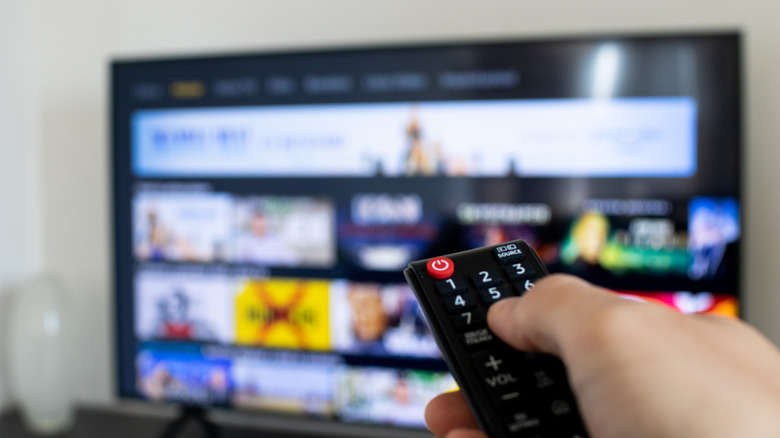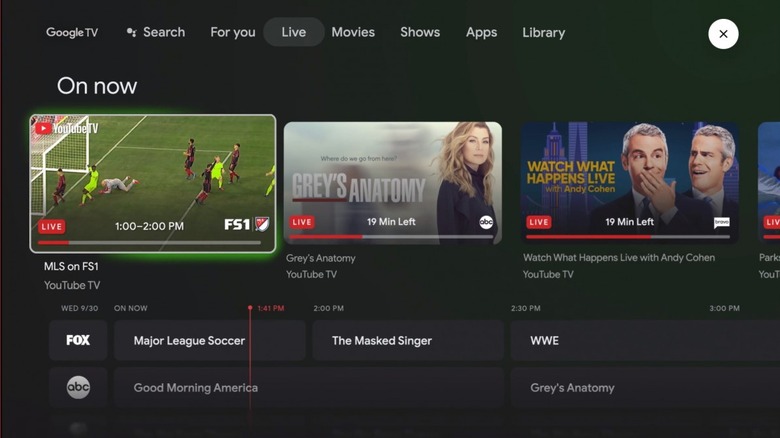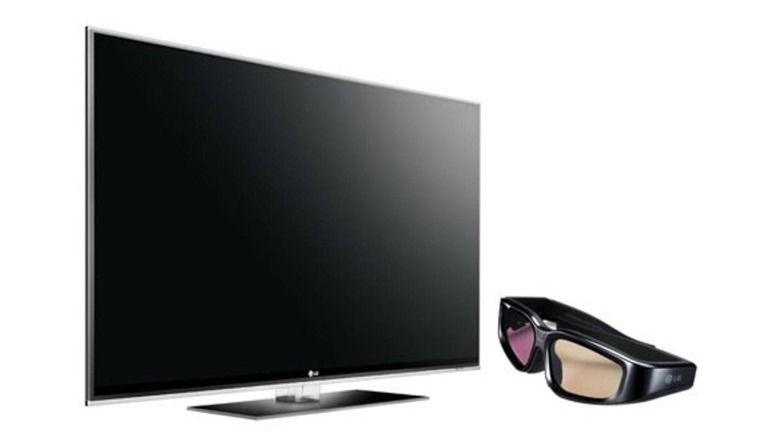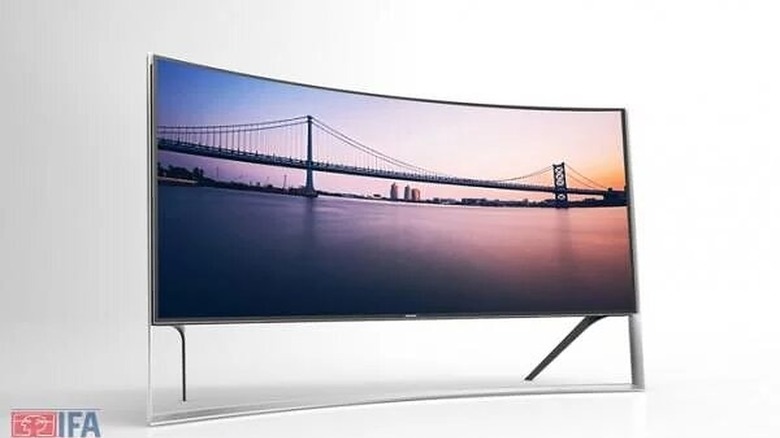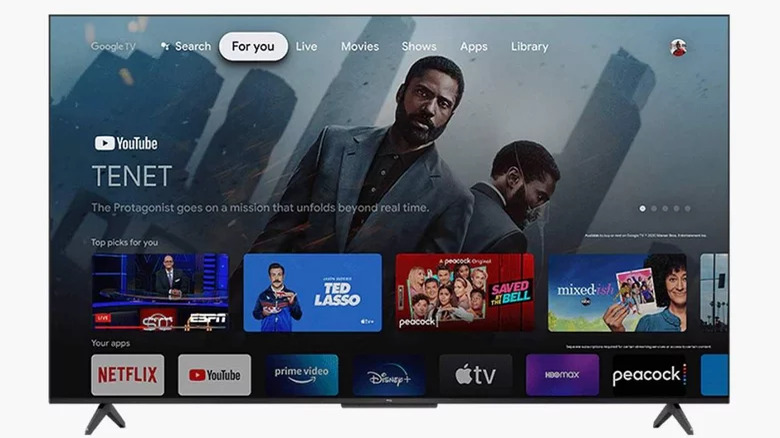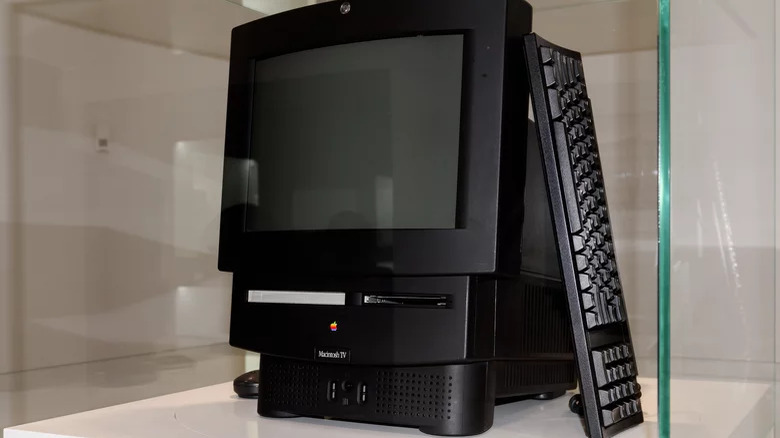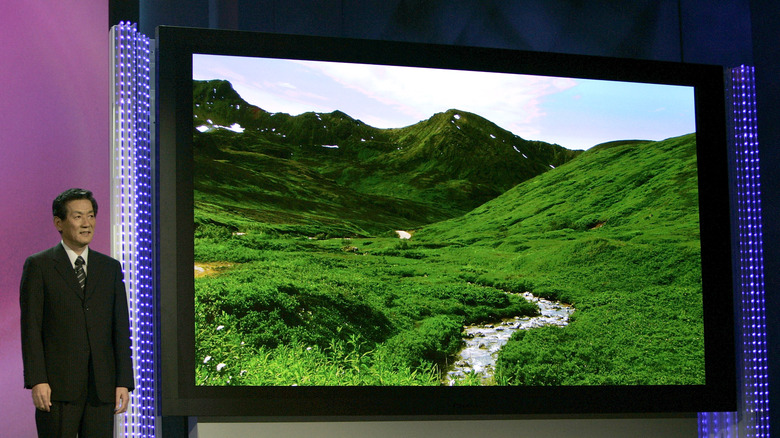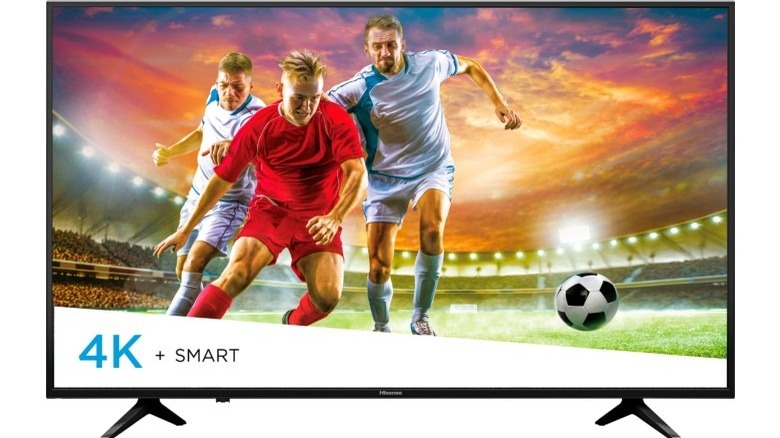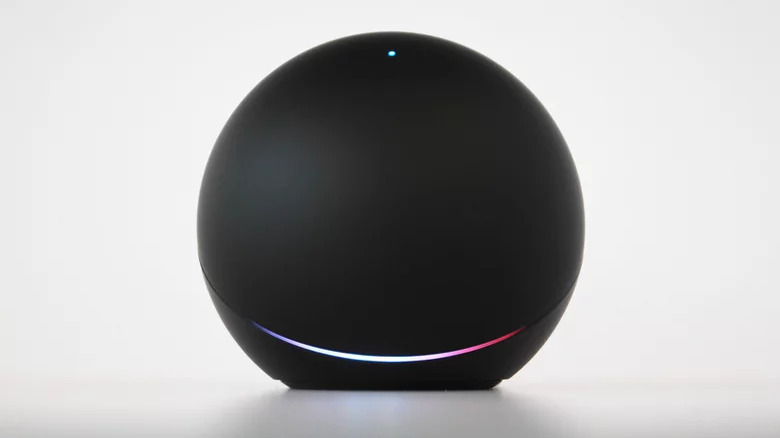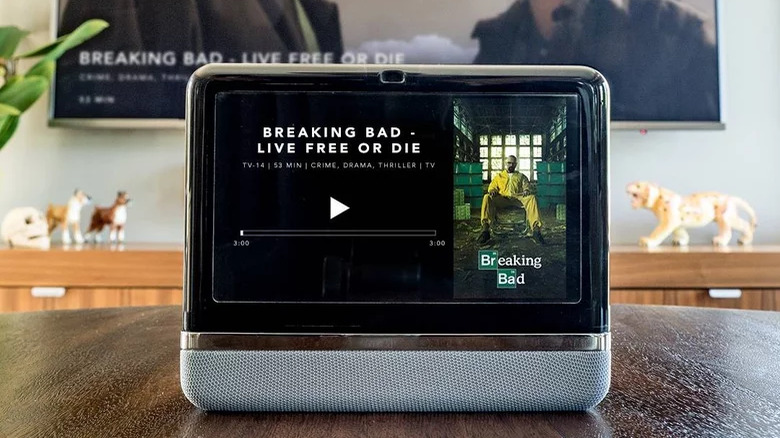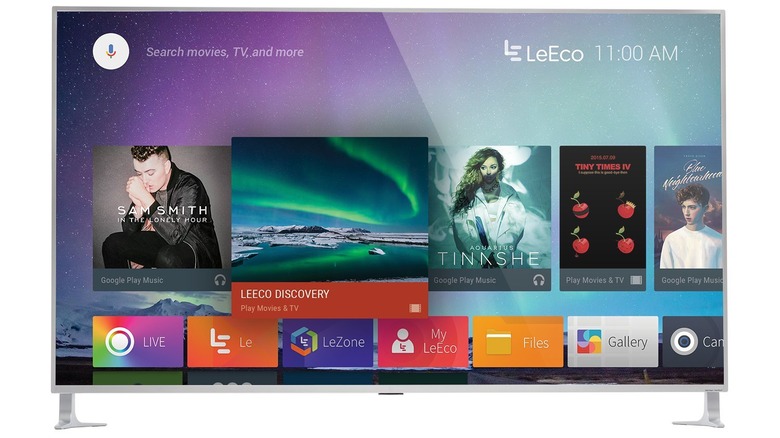Futuristic TVs That Were Total Flops
The last two decades saw the consistent release of cutting-edge TVs. Some futuristic TVs, especially those conceived before 2010, became disasters and were discontinued after the initial hype died down. Other TV technologies fared even worse as their companies lost millions in revenue due to poor customer satisfaction and unprecedented low sales. Most of these TVs attempted to offer competitive TV displays, provide an all-in-one solution for live TV streaming, and connect smart devices to the television. But high hopes were often dashed as TV manufacturers bid farewell to their innovations.
Today's televisions are nearly computers in themselves, offering interactive user interfaces and apps that make finding the perfect show or movie a breeze. This is the result of TV companies gleaning from their slip-ups by quitting production and quickly moving on to the latest tech. The failure of these once-futuristic TVs allowed these companies to get to where they are today.
Google Fiber TV
Google Fiber started as an expansion of the Alphabet umbrella itself, with the promise of high-speed broadband service for internet users. The Google Fiber TV was a smart attempt to expand on Google's existing TV offerings and solidify the presence of Google Fiber on the tech block. The essence of this new tech? Google Fiber TV would enable users to watch TV, stream online videos, and browse the internet via the TV box.
At first, it was exciting to see Google Fiber rip up roads in several metropolitan cities to provide gigabit internet access. By 2015, it was already running Fiber in places like Kansas City, Charlotte, and Atlanta (via HighSpeedInternet.com). But this revolution lasted only long enough for Google to give up hope on the project in 2016, and Fiber TV became collateral damage.
The truth is that gigabit fiber expansion was a rather expensive venture, even for tech giants like Google. While some users had already purchased the Fiber TV box, Google Fiber recently announced that new customers won't get the option of signing up for the television service, but for direct access to live streaming platforms like Fubo and YouTube TV instead. Google didn't foresee a time when anyone could live-stream online without signing contracts, installing hardware, or spending so much as with Fiber TV.
LG Cinema 3D Smart TV
Watching James Cameron's 2009 movie "Avatar" in 3D certainly stimulated interest in 3D TVs. LG, Samsung, and Sony began offering high-end TV models to support the 3D feature. The first 3D TVs appeared at CES 2010 and were paraded as the future of television. But the problem with these TV sets is that they weren't well-suited for home viewing. It also required a steady supply of 3D content and specialized 3D glasses for viewing — too many requirements for such an expensive TV box.
3D TVs were a real flop, so it's not surprising that the LG Cinema 3D Smart TV did not survive the heat, even though LG continued to stuff it with the best features. At first, LG added Intel WiDi support to its 2012 lineup of 3D TVs, allowing users to push content from their smartphones to the TV. The LG Cinema 3D Smart TV also enabled 3D gaming, which promised an immersive gaming experience — but that wasn't enough.
The LG Cinema 3D Smart TV was one of the best 3D TVs that collapsed with the technology because LG and Sony finally pulled out in 2017 (via Huffington Post). As consumer interest dwindled and sales nose-dived, Samsung dropped its support for 3D in 2016 (via CNET). While 3D TVs were quite pricey for all their issues, it became worse when 4K TVs arrived on the scene. These also failed to meet up with the 3D experience of the big theater screen.
Curved TV Series
There was a lot of hype around Curved TVs upon release in 2013, but all of that soon faded (via Yahoo!). Samsung tried to deliver something mouthwatering at the IFA 2014 and came up with the 105-inch Curved TV in multiple displays, which is only closely rivaled by LG. The Curved TV is essentially a 4K Ultra HD TV with a 4200R curve for a better viewing experience. According to manufacturers, you could have a "better" viewing on curved TV sets from any corner of the room, unlike flat TVs.
But really, Curved TVs were just the exact opposite of flat TV and has nothing more to offer — coupled with the fact that there was little UHD content at the time. Since these TVs were highly priced and there were not many options to choose from, users quickly lost interest. After all, that high-sounding talk about impressive living room experience and quality viewership didn't live up to its expectations.
Samsung's Curved TVs worked hard to immerse users into the TV experience, but IMAX projections alone were not sufficient to create such a lasting impact. By 2014, their short-lived fame was already coming to an end. Even after Sony left the curved TV market to focus on Ultra-thin TVs, Samsung continued to offer limited curved TV models.
TCL 5-Series and 6-Series
Chinese company TCL launched the 5-Series and 6-Series televisions in 2021, but what made these 4K TV models special was the added benefit of Google TV. The company built a 50- to 75-inch range of smart TVs running on Roku OS. But customers didn't gush over the release for long because the TVs developed general software issues. These problems were so widespread and embarrassing that TCL had to pull its new TV models from shelves.
Although TCL claimed that the owners of Google TV always checked and installed newly released updates, it was clear that the performance bug issues would disrupt sales until they were fixed. Even worse, users who had already bought a TV had to bear the brunt. After this grand mistake, TCL stated that it would direct its strength in rolling out the P-series (via CNET). This switch likely came because the company realized the image of the 5- and 6-series was already ruined.
TCL planned to roll out budget-friendly 4K TVs that could boast of Roku's smart interface, but perhaps, the budget was too small. The TCL 5- and 6-series were discontinued.
Apple Macintosh TV
Long before Apple developed this rich ecosystem of smart devices, there was the Apple Macintosh TV. The Macintosh TV was launched in 1993 at an outrageous price of $2,099. It was Apple's idea of testing the waters, which would later give birth to Apple's TV hardware and software success. Mac TV had one of Apple's foremost television remotes that let users reset TV functions.
There were several reasons why Apple's Macintosh TV was a failure. First, even with the shiny Sony-sourced Trinitron CRT and 32Hz Motorola 68030 CPU, this TV was not as fast as the Macintosh LC 520 which had a much lower processing power. It also required a TV tuner card, which was backtracking the upgrade it claimed to offer. Graphics ability was limited to a meager 8-bit even though the TV tuner operated a full 16-bit system. Apple managed to ship only 10,000 units of the model before it discontinued sales just six months after the launch.
But users enjoyed the idea of Macintosh TV while it lasted: a computer that let you watch TV through a cable connection. Perhaps if it allowed more storage capacity than 5MB or let users minimize TV programs in one window to run tasks on the computer, it would've been more desirable, Ars Technica notes, but in the end, the product took a bow from the scene.
Panasonic Plasma TV
Although the first monochrome plasma display was developed in 1964, according to Thought Co., many TV companies started rolling out plasma TVs in the early 2000s. Some of the biggest plasma displays with 4K resolution and 3D technology were developed by Panasonic and Samsung. Panasonic unveiled its 103-inch plasma display at CES 2006, and a few years after, it flaunted a 150-inch plasma display at CES which cost over $500,000.
The flat screen had its advantages, but even the fact that it was cheaper than existing LCD screens wasn't enough to keep shoppers interested. Plasma displays could boast of better black levels than their LCD counterparts, although the latter has also improved over the years. However, plasma consumed more electricity compared to an LED-backlit LCD screen which is a turnoff for green consumers (via Finddiffer). There was also the problem of burn-in — a visible image left behind on the screen after a bright image was displayed for too long.
Many opted for LCDs instead. When sales declined, Pioneer was the first to announce that it would drop out of the plasma displays business (via CBC). Although a 2013 report from the Consumer Electronics Association predicted that Americans would purchase about $923 million worth of plasma TVs in 2015, leading producers like LG, Samsung, and Panasonic had already pulled out of the technology. Due to poor public perception and low sales, CNN noted that 2014 marked the end of Plasma TV technology.
Hisense Smart TV Series
Hisense is well-known for its long-standing involvement in smart TV technology. When the Chinese company announced the H6 Smart TV series by the end of 2013, consumers anticipated Hisense's cheaper smart TV with full HD and a 120Hz refresh rate. The Hisense H6 Smart TV even had more astonishing features. It was powered by Android, WiFi enabled, and could stream Netflix, YouTube, and other content platforms without additional hardware.
Although the Hisense Smart TV lacked 4K support (and 3D), users could fall back on a great deal of high-tech and connectivity features they were getting from this big screen. At some point, the specs could be compared to similar variants from Samsung and LG. It was definitely worth the price if you ignored the concerns raised about these TVs. From comparatively lower levels of brightness to inconsistencies from low processing power, the Hisense appeared highly unreliable.
It got worse when privacy concerns related to unauthorized data collection and back-door hacking threats were identified with Hisense's range of smart TVs. At this point, more users pledged allegiance to their Samsung and LG counterparts even though they were more expensive.
Google Nexus Q
The Nexus Q ranks highly among Google's failed hardware inventions even though this streaming device initially sold out after its announcement in 2012 (via The Verge). Google Nexus Q was a smart Android-based streamer that allowed you to connect your smartphone or tablet to your home theater and view content on the cloud. It was powered by Android 4.0 Ice Cream Sandwich, only permitting users to play content within the reins of Google and Android.
This limitation marked the beginning of terrible days for the Google Nexus Q on the market. Critics demanded that the Nexus Q be extended to stream content outside the current offerings, so much so that Google had to delay its launch. While Google claimed to be working on the hardware and pleaded with those who pre-ordered to wait, the Nexus Q never hit the shelves. Perhaps, Google was skeptical about providing anything beyond Google Play Music, YouTube, and Google Play Movies for users to stream on their TV.
And yes, reviewers were right about the Nexus Q being able to do more than connect phones to TV sets. Those who pre-ordered needed to pay an extra $399 for speakers and $49 for the connector cables. Even worse, Apple TV was already offering similar services at half the price. Soon, Google accepted that this was another failed experiment and quietly sent the device to all who preordered. Support for the app also disappeared from Google Play Store in May 2013 (via Failory).
Dabby TV Streaming Box
At a time when tech giants like Apple and Amazon hadn't cracked the voice control tech, Dabby TV came on board to save the day. This impressive TV was a two-part set-top box consisting of a tablet device that combined touch and speech control, and an HDMI dongle that plugged into your TV set. Dabby TV was designed to sit on your table and navigate TV channels and stream online video content like YouTube, Netflix, and ESPN. You could also browse social media platforms like Instagram and Twitch by speaking or tapping on this device. The Dabby TV streaming box works best for proximity-based connections and can be paired with speakers to play music.
Dabby TV was probably the most ambitious futuristic TV on the planet. In addition to voice control and AI-powered search functionalities, Dabby TV tried to consolidate all subscriptions by helping users find media over every streaming app possible. While the reasons are still unclear, Dabby TV never really set sail after its reveal at CES 2020 (via CNET).
But it's glaring to see that for technology so young and a product still new, Dabby spoke too soon. The company planned to sell the Dabby Touch and HDMI dongle kit for a pre-order price of $149, while the retail price of the individual devices would stand at $299 and $49, respectively, afterward. Quite painfully, the Kickstarter campaign to raise $50,000 before the launch flopped, and units were never shipped.
LeEco TV
Speaking of ambitious TV tech, LeEco Electronics entered the U.S. market with the promise of on-demand TV streaming services, electric cars, and cheap smartphones. LeEco was working hard to develop its ecosystem, which was a rather ambitious venture for a company still new to the United States.
The LeEco TV still caught the attention of the public. Unlike most manufacturers, LeEco started with live streaming video service, rather than making TV hardware models. Further driven by a thirst for excellence, the LeEco TV mounted all the heavy-weight platforms on its shoulders including Hulu, Netflix, iTunes, and Amazon Prime Video. In the end, the company brought an 85-inch LCD TV to the U.S., operating on LeEco's UI and with on-demand and live-streaming capabilities (via The Verge).
Why did the LeEco TV fail? The lack of structure consistent with LeEco's disorganized press events was enough to raise eyebrows. There were also risks with launching multiple heavy-weight devices at the same time that LeEco was so willing to brush past. Additionally, U.S. buyers were unfamiliar with the brand name. When sales did not improve, it had to lay off over 400 of its 500 U.S. employees and list its Silicon Valley real estate for sale. The LeEco TV story is proof that bad management can ruin even the most promising tech.
